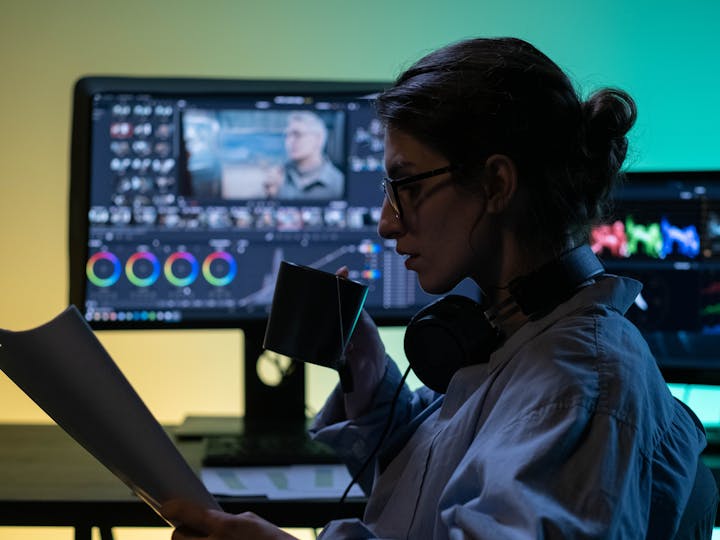The world of professional audio production has evolved dramatically over the past decade, with curated sound libraries becoming the backbone of modern cinematic storytelling. Whether you’re crafting the subtle creak of a door in a psychological thriller or orchestrating the thunderous chaos of an epic battle sequence, understanding how to navigate and utilize these specialized collections can transform your project from amateur to professional-grade.
Table of Contents
Understanding the Architecture of Cinematic Sound Libraries
Modern sound libraries are meticulously organized ecosystems, typically categorized into three primary domains: Foley recordings, ambient soundscapes, and dynamic action elements. Each category serves a distinct narrative purpose and requires a different approach to exploration and implementation.
Foley libraries represent the most intimate layer of cinematic audio. These collections capture the minutiae of human interaction with the physical world – the whisper of fabric against skin, the precise click of a mechanical switch, or the subtle squelch of mud underfoot. When exploring Foley libraries, focus on the recording quality and the context in which sounds were captured. Professional collections often provide multiple variations of each sound, recorded at different intensities and from various perspectives. This variation is crucial because the same footstep will sound dramatically different whether your character is sneaking through an abandoned warehouse or confidently striding across marble floors.
Diving Deep into Ambient Soundscapes
Ambient libraries require a more atmospheric approach to exploration. These collections aren’t just background noise; they’re the emotional foundation that supports your visual narrative. A well-curated ambient library will offer layered environments that can be deconstructed and rebuilt to match your specific needs. When browsing these collections, listen for the subtle elements that create authenticity – the distant hum of traffic that makes an urban scene believable, or the specific combination of wind patterns and wildlife that transforms a generic outdoor setting into a living, breathing wilderness.
The key to mastering ambient exploration lies in understanding spatial relationships. Professional libraries often provide sounds recorded in various acoustic environments, from tight, controlled spaces to vast, reverberant halls. This acoustic fingerprint becomes part of your storytelling toolkit, allowing you to psychologically manipulate your audience’s perception of space and mood.
Navigating High-Impact Action Collections
Action sound libraries present their own unique challenges and opportunities. These collections are designed to deliver visceral impact, but the most effective approach isn’t always selecting the loudest or most dramatic option. Professional action libraries are typically organized by impact type, material properties, and intensity levels. Understanding this organization helps you build dynamic sequences that maintain audience engagement without causing fatigue.
When exploring action collections, pay attention to the attack and decay characteristics of each sound. A gunshot might have the same fundamental impact, but the acoustic signature of that shot will vary dramatically depending on the environment, the weapon type, and the recording methodology. Professional libraries provide these variations because they understand that context drives selection, not just raw power.
The Art of Library Curation and Selection
Not all sound libraries are created equal, and developing a discerning ear for quality becomes essential as you advance in your craft. Premium libraries invest heavily in recording equipment, acoustic environments, and post-production processing. This investment translates into sounds that integrate seamlessly into professional productions without requiring extensive manipulation.
When evaluating potential libraries, consider the metadata and organizational structure. Well-curated collections provide detailed information about recording conditions, microphone placement, and suggested usage contexts. This documentation becomes invaluable when you’re working under tight deadlines and need to quickly identify the perfect sound for a specific moment.
Technical Considerations for Professional Implementation
The technical specifications of your chosen libraries directly impact your workflow efficiency and final output quality. Professional-grade collections typically offer multiple file formats and bit depths, allowing you to match the technical requirements of your specific project. Understanding these specifications helps you make informed decisions about which libraries will integrate most effectively into your existing workflow.
Consider the dynamic range and frequency response of your selected sounds. Cinematic audio requires sounds that can be manipulated without degradation, compressed for broadcast distribution, or expanded for theatrical presentation. Sound effects for professionals must maintain their integrity across these various playback scenarios, which requires careful attention to the original recording and mastering process.
Building Your Personal Sound Palette
Developing expertise in library exploration ultimately leads to building your own curated collection of go-to sounds. This personal palette becomes part of your creative signature, allowing you to work more efficiently while maintaining consistency across projects. Professional sound designers often spend years building these collections, carefully selecting elements that complement their aesthetic preferences and technical requirements.
The most successful approach combines broad exploration with focused curation. Regularly dedicating time to browsing new libraries keeps your palette fresh and prevents creative stagnation, while maintaining a core collection of trusted sounds ensures consistency and efficiency when deadlines are tight.
Mastering curated sound libraries is an ongoing journey that rewards patience, attention to detail, and a willingness to experiment. The investment in understanding these tools pays dividends in the emotional impact and professional polish of your final productions.


